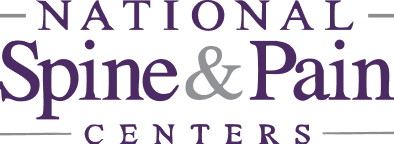I wrote an article many years ago about pain itself. I likened it to an old adversary of humanity throughout the ages. It has been a battle fought valiantly at multiple fronts with remarkable success. However, the war has not been won.
Pain is perhaps the very first reason we have the medical field as it was the noxious spark for which the very first humans were forced to seek a remedy.
At face value, pain seems like a simple subject. After all, everyone experiences it one way or another. It is ubiquitous and makes its presence known quite efficiently to the person who experiences it. Yet, it is far from simple at its core. Pain is truly complex. This is especially true when it comes to chronic pain. Pain affects the individual as a whole. Chronic pain in one body part simply does not stay in that region. Over time, it can lay waste to the total human physiology, and more importantly, at times to the human psychology.
Etiology of pain remains diverse. Also, one of the biggest mistakes made by laypeople and even members of the medical community in assessing pain and its treatment is confusing pain as a symptom vs pain as a disease itself. The former is the form with which most are familiar. A noxious stimulus results in an unpleasant experience. In this scenario, pain is a protective mechanism honed up through evolution to provide valuable information related to tissue damage as in touching a hot stove. However, there are situations, when over time, original tissue damage has healed; yet, the nerve tissue itself becomes embroiled in injury and inflammation-causing a perpetual cycle of pain and misery for the afflicted.
When I taught residents and fellows years ago, I used to emphasize one statement. Pick the right tool for the job. Don’t use a hammer when all you need is a screwdriver. Unfortunately, we all are creatures of habit and have a tendency to apply the same algorithm all the time. A surgeon obviously has a tendency to come up with surgical diagnoses and solutions whereas an endocrinologist focuses on hormonal abnormalities, and a gastroenterologist naturally gravitates toward GI culprits.
If there is no curable cause, the common denominator for most treatment options end up in symptom management, which is decreasing the pain itself. This is accomplished through a variety of medications, some of which could be powerful opioids, injections, nerve ablations, behavioral modification, psychotherapy, etc. Each of these options has its own set of merits and complications, discussion of which is beyond the scope of this article. It suffices to say that each patient is unique and the so-called cookie-cutter method does not apply.
The above brings us to the crux of this discussion. The question is if we have another way of tackling pain in addition to the above options. Is there a way to attenuate pain outside the conventional box?
When pain is generated in the periphery, it is transmitted and processed in the thalamus toward the higher brain centers through two pathways. From an anatomic viewpoint, we call these the lateral discriminative pathway, and the medial affective pathway. The former is about location, quality, and intensity whereas the latter is about the emotional response to pain and autonomic activation.
A great modality for attenuation of chronic pain and specifically chronic neuropathic pain has been neuromodulation. This is essentially what we call spinal cord stimulation, when an implanted array of electrodes placed over the dura in the spine circumvent the pain stimuli converging toward the dorsal columns of the spinal cord. The traditional philosophy was to replace what is felt as pain with another non-noxious stimulus such as a pleasant paresthesia or vibration. This has been helpful to a degree, and many complex neuropathic pain cases have been treated this way. Nevertheless, it has been our experience that over time this type of tonic constant stimulation might lose its efficacy. Therefore, various medical device manufacturers have scrambled to come up with other techniques and frequencies to address this tolerance to stimulation phenomenon.
In the past few years, the field of neuromodulation has undergone a revolution of sort. Now, most big companies in this space offer systems that are almost paresthesia free. In other words, to mask the pain, the patient does not need to feel any tingling in the painful area. Various subthreshold programming options have become available with the option of providing intermittent stimulation.
Of particular significance and interest is one special proprietary wave pattern, BurstDR, which has an added benefit of addressing the totality of pain perception complex not only by modulating the lateral pathway but also the medial pathway responsible for the emotional affective aspect of the pain. This is perhaps the prime example of thinking outside the proverbial box.
To put the above paragraph in context, this is similar to someone having an aversion toward eating fish. One can be forced to eat it even though to that person the taste is unacceptable and very unpleasant. Once the affective pathway is modulated, that same person can eat the fish knowing full well they don’t like fish, but eating it is not unpleasant anymore. In other words, he or she becomes indifferent toward the unpleasant nature of the experience. So in patients with chronic pain and once the above stimulation is active, they have awareness of the pain but the unpleasant affective component becomes mitigated. Obviously, in clinical practice with the above technology, we try to activate both pathways to accomplish control of pain not only through the traditional model, but also through the new model of modulating the affective component.
In this era of opioid epidemic in the U.S., interventional pain specialists can redefine the objectives of pain treatment by offering comprehensive multi-modality treatments to provide alternatives to opioids and hopefully by thinking more outside the box.




.2508191744197.jpg)
.2503201349082.jpg)
